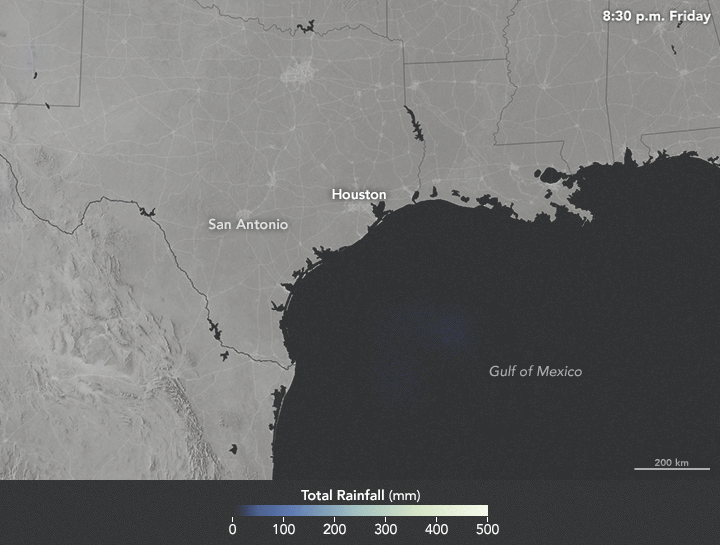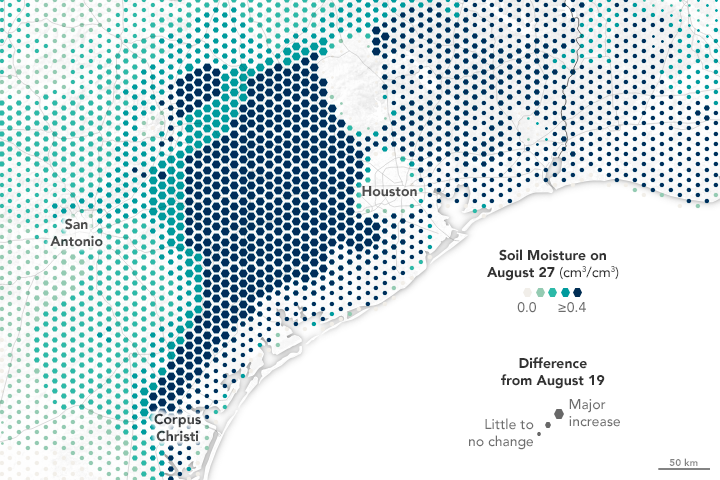Archive for the ‘Tropical storms’ Category
Healthcare Infrastructure: Recovering from Harvey: Lessons learned from Sandy
Saturday, September 2nd, 2017- “……Most of the healthcare visits after the storm will not be people injured or sickened directly but rather people with chronic health conditions who have been displaced from their normal source of health care.
- Disruption of outpatient, community-, and home-based care adversely affects patients not only directly but also indirectly by placing an extraordinary burden on hospitals that are ill-prepared for both the volume of patients and the types of problems that these patients experience……
- Nonhospital residential facilities are usually less prepared and… inherently less resilient than hospitals.
- The storm can easily splinter the already fragile support systems on which many vulnerable people (eg, elderly, young, chronically ill, addicted, poor, and non–English speaking people) rely, such as home-based care, public clinics, just-in-time medications, and public transportation.
- Special needs and medical shelters must have a large capacity with a well-considered mission, staffing, and concept of operation.
- With the aftermath of the storm lasting weeks or months, patients’ access to health care may be disrupted for extended periods……
- External support and relief will be desperately needed to handle the surge in patients and to backfill local personnel who are unable to report for work or who need respite after days and weeks of sustained work with little sleep.
- The loss of readily available vehicle fuel, electricity, electronic communications, and transportation threaten people with chronic health needs and greatly hinder the ability of healthcare facilities to respond.
- Mobile health units of various types can be very useful….
- Normal procedures and standards of care may need to be adjusted in order to do the most good for the greatest number.
- Political leaders play an important but not always constructive role. ……”
Harvey Drops Devastating Rain on Texas
Friday, September 1st, 2017
Torrential rains from Hurricane Harvey (now a tropical storm) continue to batter the flood-ravaged Texas, and the threat is now stretching into southwestern Louisiana. The sluggish storm—moving just 4 kilometers (2 miles) per hour at times—has been pulling warm, moist air from the Gulf of Mexico to fuel tremendous rainfall over land.
The animation above depicts satellite-based measurements of rainfall from 7:30 p.m. Central Daylight Time on August 25 to 7:30 p.m. on August 28, 2017. The brightest areas reflect the highest rainfall amounts, with many places receiving 500 millimeters (20 inches) or more during this period (the top of our scale). The measurements are a product of the Global Precipitation Measurement (GPM) mission, which is a partnership between NASA, the Japan Aerospace Exploration Agency, and five other national and international partners.
MEANWHILE………
“……One convenience store in Houston reportedly charged $20 for a gallon of gas, $8.50 for a bottle of water and $99 for a case of water, according to the Texas Attorney General’s office. The state has received 684 complaints in all, according to Kayleigh Lovvorn, a spokeswoman for the office…..”
NASA: Soil Moisture Satellite Observes Harvey’s Wrath
Friday, September 1st, 2017
Hurricane Harvey has dropped record-breaking amounts of rainfall, particularly around Houston, Texas, since making landfall on August 25, 2017. Yesterday, we showed satellite-based estimates of rainfall, while today’s image shows the storm’s consequences from a different but complementary perspective.
The map above depicts soil conditions around south Texas on August 27 compared to values observed on August 19. Colors on the map represent the amount of surface soil moisture, with the darkest colors representing soil that is saturated or nearly so. The size of each hexagon represents how much the level of soil moisture changed from the days before Harvey to the middle of the event (the most recent date for which we have data). Note that data are sparse in Houston itself, as much of that area is covered by impervious surfaces (roads, buildings, and infrastructure).
Irma on deck
Friday, September 1st, 2017000
WTNT31 KNHC 312031
TCPAT1
BULLETIN
Hurricane Irma Advisory Number 6
NWS National Hurricane Center Miami FL AL112017
500 PM AST Thu Aug 31 2017
…IRMA BECOMES A CATEGORY 3 HURRICANE OVER THE EASTERN ATLANTIC…

SUMMARY OF 500 PM AST…2100 UTC…INFORMATION
———————————————-
LOCATION…17.3N 34.8W
ABOUT 720 MI…1160 KM W OF THE CABO VERDE ISLANDS
ABOUT 1780 MI…2865 KM E OF THE LEEWARD ISLANDS
MAXIMUM SUSTAINED WINDS…115 MPH…185 KM/H
PRESENT MOVEMENT…WNW OR 290 DEGREES AT 12 MPH…19 KM/H
MINIMUM CENTRAL PRESSURE…967 MB…28.56 INCHES
WATCHES AND WARNINGS
——————–
There are no coastal watches or warnings in effect.
DISCUSSION AND 48-HOUR OUTLOOK
——————————
At 500 PM AST (2100 UTC), the center of Hurricane Irma was located
near latitude 17.3 North, longitude 34.8 West. Irma is moving
toward the west-northwest near 12 mph (19 km/h). This motion is
expected to continue today, followed by a westward turn on Saturday,
and a west-southwestward motion by Sunday.
Maximum sustained winds have increased to near 115 mph (185 km/h)
with higher gusts. Irma is a category 3 hurricane on the
Saffir-Simpson Hurricane Wind Scale. Fluctuations in strength,
both up and down, are possible, but Irma is expected to remain a
powerful hurricane for several days.
Hurricane-force winds extend outward up to 15 miles (30 km) from the
center and tropical-storm-force winds extend outward up to 80 miles
(130 km).
The estimated minimum central pressure is 967 mb (28.56 inches).
HAZARDS AFFECTING LAND
———————-
None
NEXT ADVISORY
————-
Next complete advisory at 1100 PM AST.
$$
Forecaster Blake
Two US Navy warships, the USS Kearsarge and the USS Oak Hill, are being deployed to Texas
Wednesday, August 30th, 2017- “….Air Force and Navy helicopters began flying rescue missions in Texas on Monday night, according to a US defense official, marking the first use of active duty military assets in the hurricane rescue efforts….”
- Entire Texas National Guard now activated (12 000)
- “…Military helicopters are being used alongside Coast Guard helicopters, but the Coast Guard has taken the lead on coordinating air operations…”
- More than 8,500 have been rescued so far in Houston alone
- What we know about the death toll
As rescuers work night and day the number of victims of the storm’s wrath is coming into focus. Here’s what we know about the 28 dead confirmed so far:
- Harris County: 13
- Galveston County: 4
- Montgomery County: 3
- Fort Bend County: 2
- Jasper County: 2
- Jefferson County: 2
- Aransas County: 1
- Nueces County: 1
More than 1,000 people have died in floods across South Asia this summer
Wednesday, August 30th, 2017- At least 41 million people in Bangladesh, India and Nepal have been directly affected by flooding and landslides resulting from the monsoon rains, which usually begin in June and last until September.
https://www.youtube.com/watch?v=6YEt_nMaa5s
TS Harvey: Forecasters predict another five to 10 inches of rain could fall in western Louisiana
Wednesday, August 30th, 20178/29/2005: Katrina makes landfall as a Category 4 storm, bringing with it sustained winds of 145 mph with gusts of up to 175 mph and massive storm surges that overwhelmed the city’s levees, flooding 80% of the city, as well as many of the outlying neighborhoods, or parishes.
Tuesday, August 29th, 2017- “…Without electricity or basic supplies, tens of thousands of people sought shelter in the New Orleans Convention Center and Louisiana Superdome. At both sites, conditions rapidly deteriorated amid overcrowding and a lack of supplies. Almost unbelievably, it took more than two days for a full-scale relief effort to be launched. In the meantime, frustration mounted as stranded residents suffered from heat, hunger, crime and a lack of medical care….”
https://www.youtube.com/watch?v=tdM8yZ-DVtk
Harvey: At least 9 nine dead
Tuesday, August 29th, 2017- The administrator of the Federal Emergency Management Agency, Brock Long, said on Monday that he expected more than 450,000 people to apply for federal assistance.
-
For the time being, efforts are focused on the most basic elements of keeping people alive — plucking stranded survivors from the flood, providing shelter, food and water, and restoring electricity to hundreds of thousands of people who were left without power.
-
FEMA was shipping two million liters of water and two million meals to the region.
-
Other government agencies, charities and corporations were also moving supplies into the region.
-
Governor Abbott activated the entire Texas National Guard to aid in rescue and recovery, raising the number of troops involved to 12,000 from 3,000.


